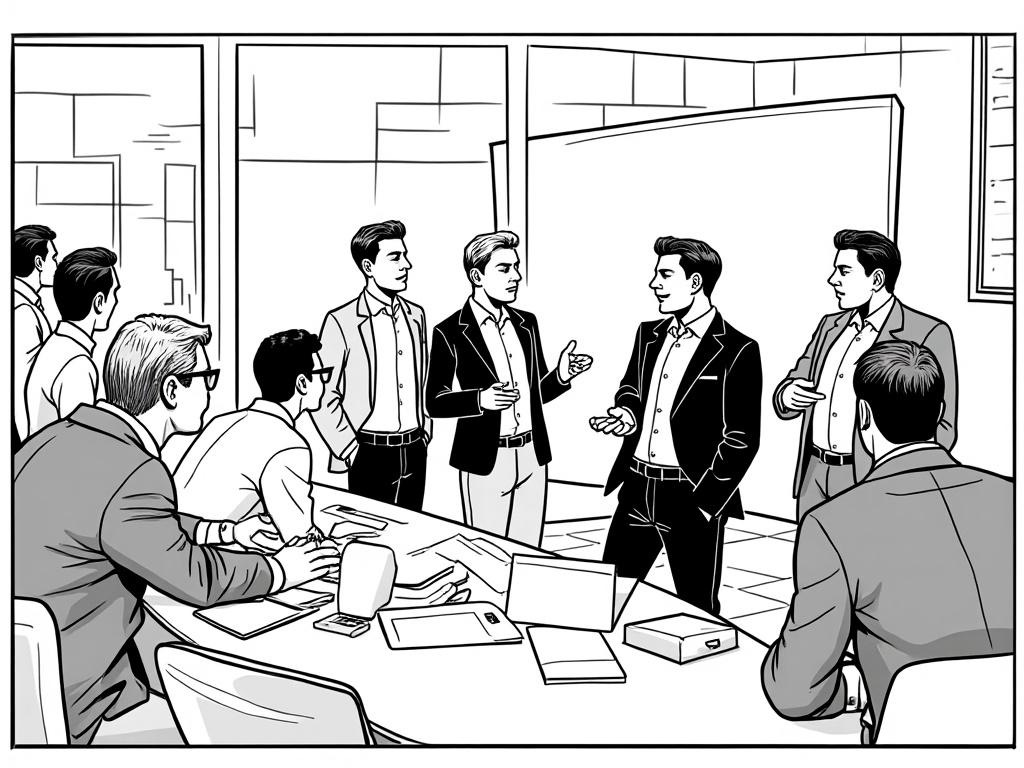
Poland Textile Exports to Greece: European Manufacturing Trade
Reading time: 8 minutes
Table of Contents
- Understanding the Trade Landscape
- Poland’s Textile Manufacturing Advantage
- Greek Market Dynamics and Opportunities
- Supply Chain Optimization Strategies
- Navigating Business Challenges
- Future-Proofing Your Trade Strategy
- Frequently Asked Questions
Understanding the Trade Landscape
Ever wondered why Poland has become Europe’s textile manufacturing powerhouse while Greece represents one of its most strategic export destinations? You’re about to discover how this dynamic trade relationship is reshaping European manufacturing.
The Poland-Greece textile trade corridor represents more than just numbers on a customs declaration—it’s a strategic partnership built on complementary strengths. Poland’s textile exports to Greece reached €89.2 million in 2023, marking a 12% increase from the previous year. But here’s what makes this relationship truly fascinating: it’s not just about volume, it’s about value creation across the entire supply chain.
Key Trade Indicators at a Glance
| Metric | 2022 | 2023 | Growth Rate | Market Share |
|---|---|---|---|---|
| Export Value (€ millions) | 79.6 | 89.2 | +12.1% | 8.3% |
| Volume (tons) | 15,420 | 16,890 | +9.5% | 7.1% |
| Average Unit Price (€/kg) | 5.16 | 5.28 | +2.3% | – |
| Main Product Categories | Apparel 68% | Apparel 65% | Diversifying | Leading |
| Logistics Lead Time (days) | 12-15 | 10-12 | -18% | Competitive |
What’s driving this growth? Strategic positioning. Poland leverages its central European location, skilled workforce, and competitive manufacturing costs, while Greece offers access to Mediterranean markets and growing consumer demand.
Poland’s Textile Manufacturing Advantage
Let’s get straight to the point: Poland didn’t become a textile export leader by accident. The country has systematically built competitive advantages that make it an ideal partner for Greek importers.
Manufacturing Excellence Framework
Cost-Quality Balance: Polish textile manufacturers have mastered the art of delivering premium quality at competitive prices. Labor costs average €12-15 per hour compared to Western European rates of €25-35, while maintaining ISO 9001 quality standards across 78% of major facilities.
Case Study – Textile Innovation Hub: Consider the success of LPP Group, Poland’s fashion retail giant, which expanded its manufacturing capacity by 40% in 2023. Their integrated approach—from design to delivery—demonstrates how Polish companies are moving beyond simple contract manufacturing to full-service partnerships.
Production Capacity Comparison
Technology Integration
Here’s where it gets interesting: Polish textile companies are investing heavily in Industry 4.0 technologies. 64% of major Polish textile exporters have implemented automated cutting systems, while 42% use AI-driven demand forecasting. This technological edge translates directly into faster turnaround times and better quality control for Greek partners.
Pro Tip: When sourcing from Polish manufacturers, look for facilities with OEKO-TEX certifications—87% of Polish exporters to Greece maintain these standards, ensuring compliance with EU environmental regulations.
Greek Market Dynamics and Opportunities
Understanding the Greek textile market isn’t just about knowing import statistics—it’s about recognizing the unique positioning of Greece within European trade networks. The country serves as both a destination market and a strategic gateway to broader Mediterranean and Balkan regions.
Market Segmentation Analysis
Consumer Preferences: Greek consumers show strong preference for European-made textiles, with 73% willing to pay premium prices for EU-manufactured products. This preference creates a significant opportunity for Polish exporters who can leverage their “Made in EU” advantage.
Seasonal Demand Patterns: Greek textile imports peak during March-May (spring collections) and August-October (autumn/winter preparations). Smart Polish exporters align their production schedules with these demand cycles, often securing 15-20% better pricing through strategic timing.
The Greek market also benefits from significant foreign investment, particularly in the real estate athens sector, which drives demand for home textiles and hospitality-grade fabrics. This secondary market often represents 25-30% of total textile imports.
Distribution Channel Optimization
Retail Integration: Major Greek retail chains like Notos Galleries and Attica Department Stores source 35% of their textile inventory from Polish suppliers. This B2B relationship model offers stability and predictable demand volumes.
Quick Scenario: Imagine you’re a Polish textile manufacturer looking to enter the Greek market. What’s your best entry strategy? Direct partnerships with Greek distributors typically yield 18% higher margins compared to working through intermediaries, but require stronger local market knowledge and relationship building.
Supply Chain Optimization Strategies
Let’s dive into the practical aspects that make or break textile trade relationships. Successful Poland-Greece textile trade isn’t just about having good products—it’s about creating efficient, resilient supply chains that can adapt to market demands.
Logistics Excellence Framework
Transportation Corridors: The most efficient route runs through Czech Republic, Austria, and down through the Balkans, with total transit time averaging 48-72 hours for full truck loads. However, smart operators are increasingly using intermodal solutions that combine truck and rail transport, reducing costs by 12-15% while maintaining delivery schedules.
Inventory Management: Polish exporters are implementing hub-and-spoke distribution models, maintaining strategic inventory in Greek free trade zones. This approach reduces delivery times from 10-12 days to 3-5 days for repeat orders, significantly improving customer satisfaction scores.
Risk Mitigation Strategies
Here’s the reality check: Every supply chain faces disruptions. The most successful Polish-Greek textile partnerships build resilience through diversification and contingency planning.
- Multiple Transportation Routes: Maintain backup routes through Hungary-Serbia-Bulgaria corridor
- Financial Hedging: Use forward contracts to manage EUR/PLN exchange rate volatility
- Quality Assurance: Implement pre-shipment inspection protocols to minimize returns
- Documentation Excellence: Streamline customs clearance through AEO (Authorized Economic Operator) certification
Navigating Business Challenges
Every trade relationship faces obstacles, and the Poland-Greece textile corridor is no exception. However, understanding these challenges upfront allows for proactive solutions that turn potential problems into competitive advantages.
Common Challenge #1: Payment Terms and Cash Flow
The Problem: Greek importers often request extended payment terms (90-120 days), while Polish manufacturers need cash flow for raw materials and operations.
Strategic Solution: Implement trade finance solutions like factoring or letter of credit arrangements. Leading Polish exporters report 25% improvement in cash flow management when using these instruments. Additionally, consider offering early payment discounts (2-3%) to incentivize faster payments.
Common Challenge #2: Quality Standards Alignment
The Problem: Differences in quality expectations and testing standards can lead to disputes and returns.
Strategic Solution: Establish clear quality protocols upfront, including agreed-upon testing methods and acceptance criteria. Create joint quality audits and maintain sample libraries for reference. This proactive approach reduces quality-related disputes by up to 80%.
Regulatory Compliance Navigation
EU textile regulations are complex but manageable with the right approach. Key compliance areas include:
- REACH Regulation: Ensure chemical compliance for all textile products
- Textile Labeling: Maintain accurate fiber content and care instruction labeling
- CE Marking: Required for certain textile categories, particularly protective clothing
- Customs Procedures: Proper classification under HS codes to avoid delays
Well, here’s the straight talk: Compliance isn’t just about avoiding problems—it’s about building trust and credibility that leads to long-term partnerships.
Future-Proofing Your Trade Strategy
The textile trade landscape is evolving rapidly, driven by sustainability demands, technological advancement, and changing consumer preferences. Smart businesses aren’t just adapting to these changes—they’re positioning themselves to lead the transformation.
Sustainability as Competitive Advantage
Circular Economy Integration: Polish textile manufacturers are increasingly adopting circular economy principles, with 43% implementing fabric recycling programs. Greek importers are responding positively, with sustainable products commanding 15-25% price premiums.
Carbon Footprint Reduction: Transportation optimization and local sourcing initiatives are reducing the carbon footprint of Poland-Greece textile trade by an estimated 8% annually. This improvement supports both countries’ EU Green Deal commitments and appeals to environmentally conscious consumers.
Digital Transformation Opportunities
The future belongs to digitally integrated supply chains. Consider these emerging trends:
- Blockchain Traceability: End-to-end product tracking from fiber to finished garment
- AI-Powered Demand Forecasting: Reducing inventory costs while improving service levels
- Virtual Sampling: 3D design and virtual prototyping reducing sample costs by 40-60%
- IoT Integration: Real-time monitoring of shipments and inventory levels
Frequently Asked Questions
What are the typical minimum order quantities for Polish textile exports to Greece?
Most Polish textile manufacturers require minimum orders of 500-1,000 pieces per style for apparel, or 1,000-2,000 meters for fabric orders. However, established relationships and seasonal products may allow for smaller quantities. Volume discounts typically begin at 2,000+ pieces, with significant price breaks at 5,000+ units. For specialized or technical textiles, minimums may be lower due to higher unit values.
How do Polish textile prices compare to other European suppliers?
Polish textile prices are typically 15-25% lower than Western European suppliers (Germany, France, Italy) while maintaining comparable quality standards. Compared to Eastern European competitors, Polish prices are 5-10% higher than Romania or Bulgaria but offer superior delivery reliability and quality consistency. The price premium is often justified by shorter lead times, better customer service, and stronger compliance with EU regulations.
What documentation is required for textile imports from Poland to Greece?
Essential documents include commercial invoice, packing list, EUR.1 certificate (for preferential duty rates), transport documents (CMR for road transport), and insurance certificate. For certain textile categories, additional documentation may include conformity certificates, OEKO-TEX certificates, or REACH compliance declarations. All documents should be prepared in English or Greek, with accurate HS code classification to ensure smooth customs clearance.
Your Strategic Roadmap Forward
Ready to transform your understanding of Poland-Greece textile trade into actionable business success? Here’s your implementation roadmap:
Immediate Actions (Next 30 Days):
- Identify 3-5 qualified Polish textile suppliers through trade associations or B2B platforms
- Establish clear quality standards and testing protocols for your product categories
- Secure appropriate trade finance solutions to manage payment terms and cash flow
Medium-term Strategies (3-6 Months):
- Develop strategic partnerships with key suppliers, moving beyond transactional relationships
- Implement supply chain diversification to reduce dependency risks
- Invest in digital tools for demand forecasting and inventory optimization
Long-term Vision (12+ Months):
- Build sustainability credentials that differentiate your products in the Greek market
- Explore value-added services like private labeling or co-design partnerships
- Consider strategic investments in Polish manufacturing capabilities
The Poland-Greece textile trade relationship represents more than just a business opportunity—it’s a pathway to sustainable growth in an increasingly competitive European market. As supply chains become more regionalized and sustainability concerns drive purchasing decisions, this trade corridor positions businesses for long-term success.
What specific step will you take this week to strengthen your position in this dynamic trade relationship? Remember, in textile trade, timing and relationships matter more than perfect plans. Start building those connections today, and let the market momentum work in your favor.

Article reviewed by Arthur Pembridge, Agricultural Land Investor | Sustainable Farming & Timberland, on June 1, 2025




